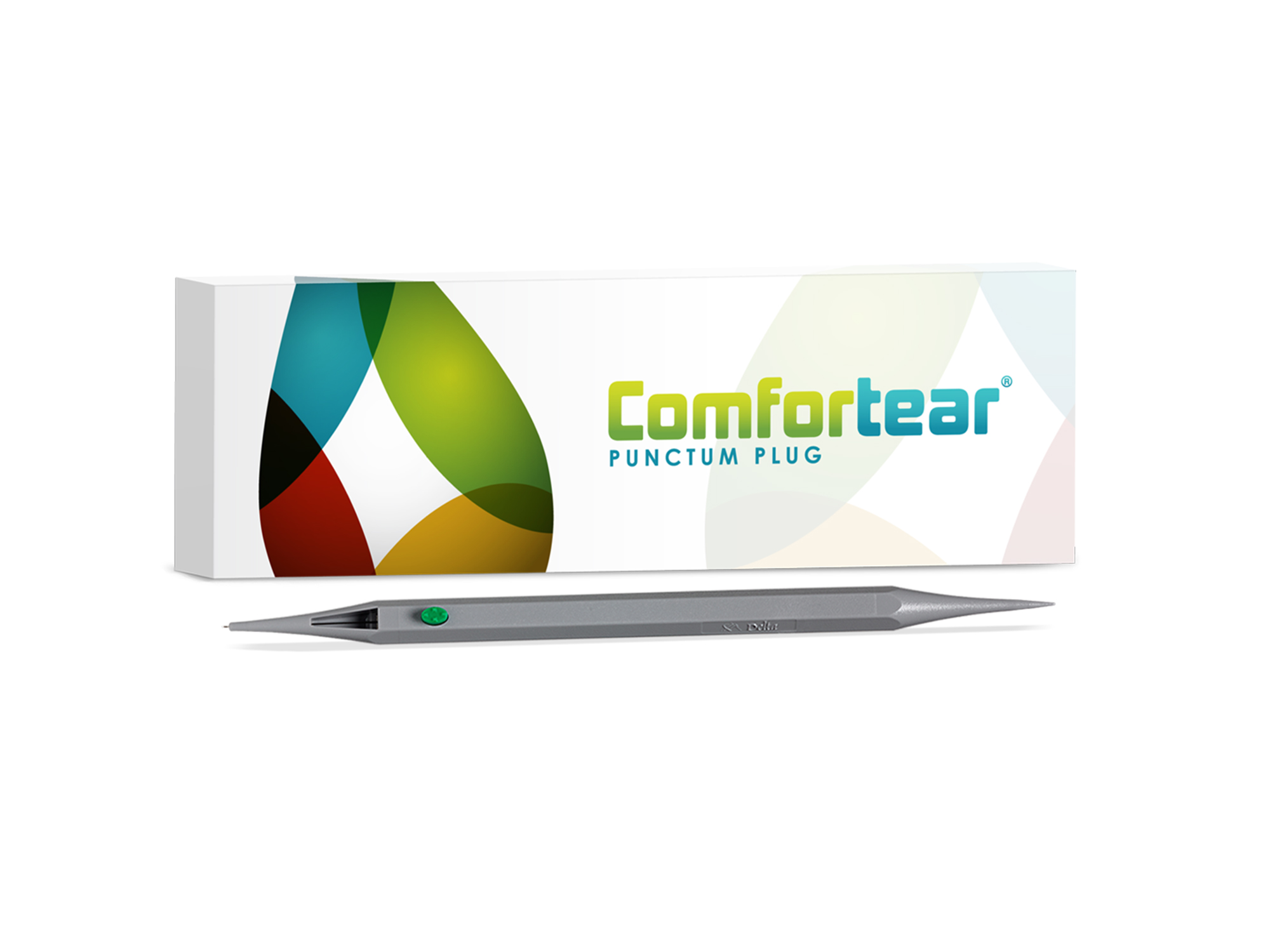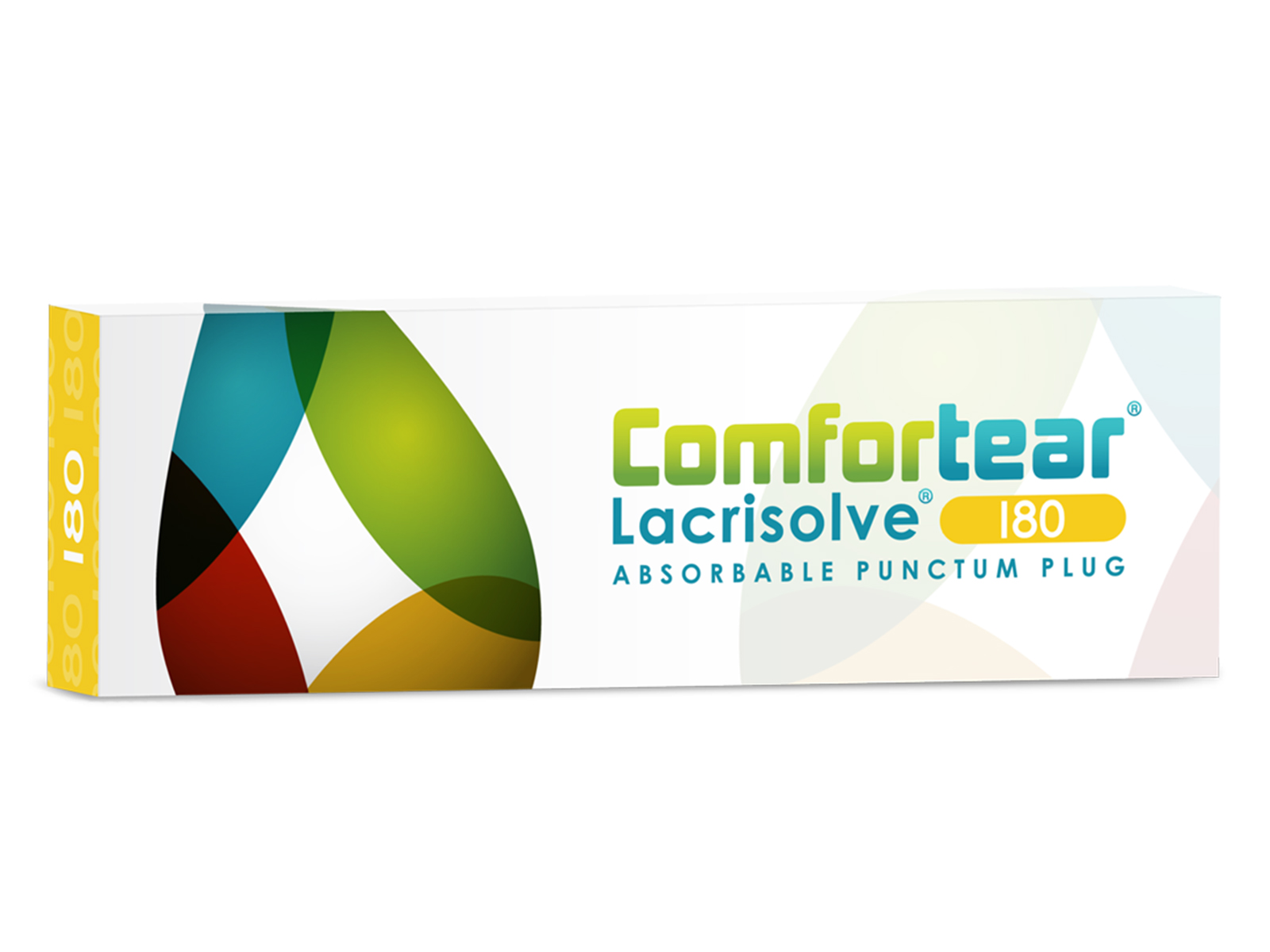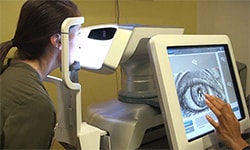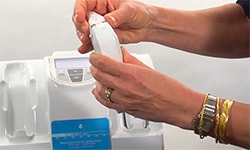Editorially Independent Content
The Comfortear Punctum Plug and the Comfortear Lacrisolve 180 Absorbable Punctum Plug have been great additions to my practice. They offer me two options—a permanent and a semipermanent plug for my patients—and both are very easy to use.
How They’re Used
Both of these plugs are easy for doctors to use and comfortable for patients. The Comfortear Punctum Plug is made from a proprietary blend of 100% liquid silicone rubber and comes preloaded on an applicator. Insertion is very simple and just requires you to push a button and the plug forms a snug fit within the punctum. The Comfortear Lacrisolve 180 Absorbable Punctum Plug, which is designed to last for approximately 180 days, is inserted using a forceps. The absorbable plug is made of polydiaxonone, a material similar to absorbable sutures, so I'm not concerned about allergic reactions or latex allergies. The Comfortear Lacrisolve is a vibrant violet color, so I can see the plug underneath the punctum and within the canaliculi. The color provides quick visual confirmation under transillumination that the plug is still present at follow-up visits. Typically, I don’t use topical anesthetic during insertion.
My biggest challenge with any absorbable punctum plug has been getting it into the punctum because they are so small. Sometimes they will slip out of forceps but now there are some great products available to assist with insertion. The Karpecki Punctal Plug Forceps by Bruder has made a huge difference in my technique. I'm not losing plugs and get them in faster. It's a lot more comfortable for the patient and me. The permanent plugs are easier to use because they're all preloaded and, again, just a push of the button makes it so easy.
Weighing the Options
With the range of sizes available, I know that I'm going to have a good fit with either product. The Comfortear Punctum Plug comes in five sizes, ranging from 0.5mm to 0.9mm while the Comfortear Lacrisolve 180 Absorbable Punctum Plug has two sizes—0.4mm and 0.5mm. When choosing between permanent and semipermanent options, I examine the patient’s anatomy and consider the reason for occlusion. If the lid is rolling in a bit, an inferiorly placed plug will sit on the edge of the lid margin and the larger, semipermanent plug might rub on the conjunctiva during blinks. In these patients, I usually opt for the Comfortear Lacrisolve for better comfort. Since this plug is smaller, it’s easier to insert so I always use the absorbable version when plugging superiorly. The Comfortear Lacrisolve is also a great option for refractive surgery patients as well. When I refer a patient for LASIK or cataract surgery, I like to place 180-day absorbable plugs before the surgical consult.
Patient selection is key with punctal occlusion. New diagnostics and point-of-care testing, like InflammaDry (RPS Diagnostics), tell me if inflammation is present on the surface before I consider punctal occlusion. Candidates for punctal occlusion suffer from chronic allergies, wear contact lenses, or have systemic illness or autoimmune diseases that I know are associated with aqueous deficient dry eye. I often use superior punctal occlusion in patients with superior limbal keratitis. Once you have patient selection down, you will have successful outcomes.
When the patient has a reservoir of tears on the ocular surface, their tear breakup time improves and they are more comfortable throughout their day. At first, patients may be a bit leery of the procedure, but once they see how easy it is they’re thrilled with the results. First-time punctal occlusion patients tend to have the most positive reaction to the plug.
I encourage doctors to use punctum plugs more often in their practices, especially in patients with rapid tear breakup, chronic allergies, are contact lens wearers or those who spend long hours on the computer or digital devices. They're easy to use and deliver great results for your patients.






